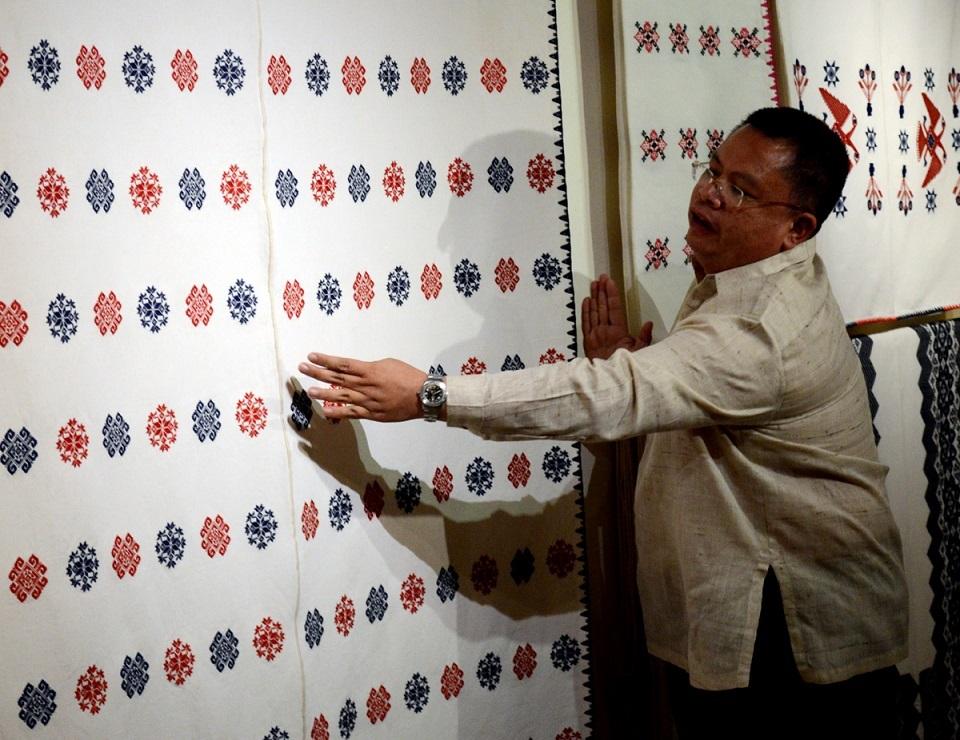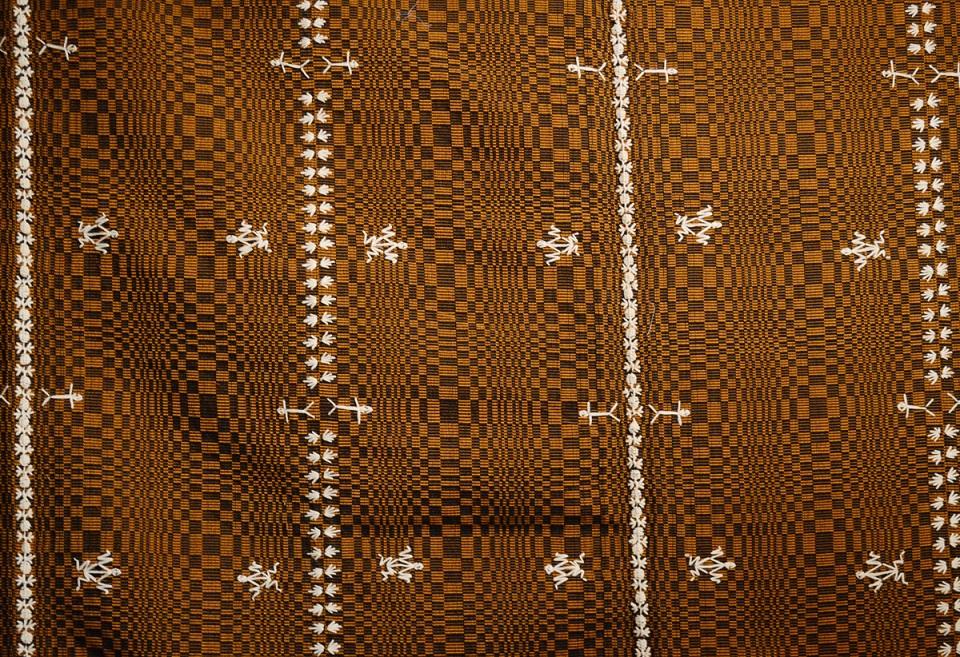Filtered by: Lifestyle
Lifestyle
‘Inabel’ displays rare Ilocos handwoven textiles at the Met
Text and photos by VERONICA PULUMBARIT

Artist Al Valenciano of the Balay ni Atong artisanal shop, said it takes about two weeks to finish two rows of 14 embroidered designs, or one embroidered art piece per day. It thus takes months to complete just one blanket.
advertisement
Beautifully crafted pieces of inabel, or rare handwoven textiles from the Ilocos region, are on exhibit at the Metropolitan Museum of Manila until Tuesday, September 22.
The textiles are mostly from the private collection of artist and social entrepreneur Al Valenciano, who heads Balay ni Atong, an artisanal shop that sells contemporary Ilocos handwoven textiles.
Some of the textiles, gathered from families in the Ilocos region, are about 200 years old—yet remain sturdy and brightly-colored.
Irene Marcos-Araneta, who was at the exhibit, told GMA News Online that inabel textiles are sturdy because Ilocanos are known for being “kuripot” and they want handwoven blankets and pillow cases to last for generations.
She attested to the sturdiness of the inabel by pointing to a certain brown-colored contemporary handwoven blanket on display at the exhibit. The blanket costs P25,000 and took 90 to 120 days to make.
Saying that she has that kind of blanket at home, she said their family’s bulldog has been unable to destroy it by scratching and biting.
Marcos-Araneta also shared that in Ilocos, learning the art of weaving is sort of a “must,” especially for girls. She herself tried to learn it when she was young but did not acquire the skill of handweaving.
However, she added, she prefers the work of male weavers because, she said, they are capable of tighter threading, making the handwoven piece even more beautiful and sturdy.
Unfortunately, only a few men and women really learn weaving as a trade. In fact, it is estimated that only 300 Ilocano weavers remain today.
Valenciano, who has been studying and promoting inabel for the last 18 years, said the ages of the remaining weavers in Ilocos range from 12 to over 90 years old.
Having worked with the weavers for many years, Valenciano said he can usually tell who made a certain piece by the quality of the weaving.
Designs

A contemporary blanket with a price tag of P25,000 on exhibit at the Met.
As the Ilocano weavers come mostly from farming families, the designs are mostly inspired by life at the farm: the farmer, the grain, the frog, and the water.
The frog is especially prominent in many designs as it is a symbol of life. Valenciano explained that in farms, if there is a frog in the rice fields, it means that there is a body of life-giving water.
Some of the other common Inabel designs are the ikikan (kissing fish) and alipugpug (whirlwind).
Valenciano noted that historical documents show that the Spanish Army once contracted Ilocano weavers to make their uniforms, and used inabel for the sails on their galleons due to the textile's strength and durability.
Valenciano, who has studied weavers' different styles for years, also purchases heirloom pieces from families and tries to figure out how these pieces were woven by hand.
Working with several communities in the Ilocos region, he has successfully led the recreation of many of the pieces. However, there are many other pieces that they have yet to figure out how to produce.
Valenciano’s Balay ni Atong shop has thus partnered with the Design Center of the Philippines in producing a design sourcebook featuring 200 kinds of inabel designs.
Proceeds of the sale of the sourcebook will go into the construction of a study center in Ilocos that will teach and promote the art of handweaving. — BM, GMA News
"Inabel" is on display at the Metropolitan Museum of Manila until Sept. 22. The museum is open Mondays to Saturdays 10:00 a.m. to 5:30 p.m.
For more information on how to obtain copies of the sourcebook, visit www.ArtPostAsia.com or www.balayniatong.com.
More Videos
Most Popular

3, patay nang bumangga ang kanilang kotse sa kasalubong na truck sa Pampanga

Elle Villanueva, naging emosyonal nang balikan ang naging aksidente sa Switzerland na muntik niyang ikamatay

Babae, itinumba matapos ipa-blotter sa barangay ang natanggap na mga death threat
_2025_03_28_23_42_02.jpg)




